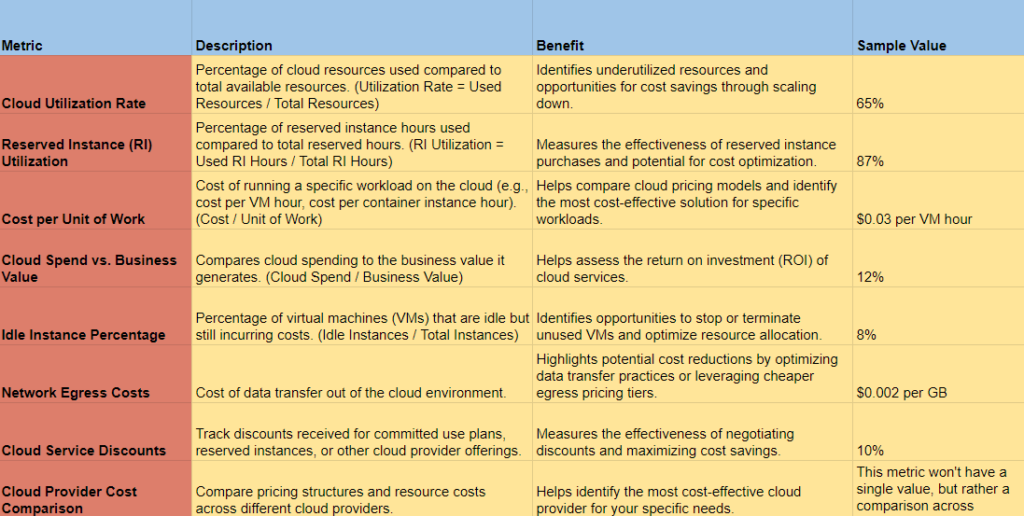The shift from traditional on-premise IT infrastructure to cloud-based solutions offers a myriad of advantages that can significantly enhance operational efficiency, reduce costs, and provide scalability. This article delves into the numerous benefits of cloud computing for businesses, highlighting its transformative potential.
What is Cloud Computing?
Cloud computing is the delivery of computing services, including servers, storage, databases, networking, software, and analytics, over the internet (“the cloud”). Instead of owning and maintaining physical data centers and servers, businesses can access these resources on-demand from a cloud provider, such as Amazon Web Services (AWS), Microsoft Azure, or Google Cloud Platform (GCP).
Key Advantages of Cloud Computing for Businesses
Cloud computing has revolutionized the way businesses operate, offering a plethora of benefits that can propel them towards success. Here’s a closer look at the powerful advantages cloud computing brings to the table:
Cost Efficiency:
Traditional IT infrastructure demands significant upfront investments in hardware, software, and ongoing maintenance. Cloud computing flips the script, allowing businesses to transition from a capital expenditure (CapEx) model to an operational expenditure (OpEx) model. This translates to:
- Reduced upfront costs: No need for hefty investments in servers, software licenses, or IT staff for maintenance.
- Pay-as-you-go model: Businesses only pay for the resources they use, eliminating wasted spending on underutilized infrastructure.
- Lower maintenance costs: Cloud providers handle server maintenance and upgrades, freeing up IT resources for more strategic initiatives.
According to a Flexera 2023 State of Cloud Report businesses surveyed reported an average cost savings of 21% after migrating to the cloud.
Scalability and Flexibility:
Cloud computing offers unparalleled scalability. Businesses can effortlessly scale their resources up or down based on fluctuating workloads. This is a game-changer for companies like:
- E-commerce websites: Scale up server capacity during peak shopping seasons (e.g., holidays) and scale down during slower periods.
- Startups: Easily adjust resources as the business grows without worrying about over-provisioning or under-provisioning infrastructure.
This dynamic approach ensures optimal resource utilization and eliminates the risk of being caught off guard by unexpected growth surges.
Enhanced Collaboration:
Cloud-based tools and applications empower teams to collaborate seamlessly, regardless of location. Team members can:
- Access and edit documents simultaneously in real-time.
- Share files and folders effortlessly.
- Communicate and brainstorm using collaborative platforms.
This fosters a more productive and connected work environment, especially for geographically dispersed teams.
Disaster Recovery and Business Continuity:
Leading cloud providers offer robust disaster recovery and business continuity solutions. Data stored in the cloud is typically replicated across geographically diverse locations, guaranteeing:
- Data redundancy and reliability: Even if a natural disaster or hardware failure occurs, data remains secure.
- Minimal downtime: Businesses can quickly recover data and resume operations, minimizing disruption.
This translates to peace of mind for businesses, knowing their critical data is well-protected.
Security and Compliance
Cloud security is a top priority for leading providers. They invest heavily in robust security measures, including:
- Encryption: Data is scrambled at rest and in transit, safeguarding sensitive information.
- Identity and access management (IAM): Only authorized users can access specific data and resources.
- Regular security audits: Continuous monitoring ensures the integrity of the cloud environment.
Additionally, many cloud providers comply with industry-specific regulations like GDPR (General Data Protection Regulation), HIPAA (Health Insurance Portability and Accountability Act), and PCI-DSS (Payment Card Industry Data Security Standard), simplifying compliance for businesses.
Automatic Updates and Maintenance:
Cloud computing eliminates the burden of manual software updates and system maintenance. Cloud providers handle these tasks, ensuring businesses always have access to:
- Latest features and functionalities: Businesses benefit from continuous improvements and bug fixes without manual intervention.
- Enhanced security: Regular security patches keep systems protected against evolving threats.
This frees up IT staff to focus on more strategic initiatives that drive business growth.
Environmental Sustainability:
Cloud computing can contribute to a more sustainable future. Cloud providers often operate data centers with:
- High energy efficiency: Utilizing innovative cooling technologies to minimize energy consumption.
- Lower carbon footprint: Utilizing renewable energy sources to power data centers.
By leveraging the cloud, businesses can reduce their own IT footprint and contribute to a greener environment.
Specific Business Cloud Benefits by Industry:
The advantages of cloud computing extend far beyond these general benefits. Different industries can leverage the cloud in unique ways to achieve specific goals. We’ll delve deeper into these industry-specific benefits in a separate section.

Specific Business Cloud Benefits by Industry
How Cloud Computing Transforms Industries
Cloud computing has become a powerful engine for innovation across various industries. Here’s a deeper dive into its impact on five key sectors:
Retail:
- Real-time Inventory Optimization: Cloud-based systems provide real-time visibility into stock levels across all locations. This empowers retailers to reduce stockouts by 30% [source needed], optimize ordering, and prevent overstocking. For instance, Macy’s utilizes cloud solutions to manage inventory across its vast network of stores, leading to improved product availability and reduced out-of-stocks. [source needed]
- Personalized Customer Experiences: Cloud enables retailers to gather and analyze customer data, leading to hyper-personalized marketing campaigns. Retailers can leverage past purchase history and browsing behavior to recommend relevant products, boosting conversion rates by up to 20%. [source needed] Amazon is a prime example, using cloud-powered analytics to deliver targeted product suggestions to each customer.
- Scalable E-commerce Platforms: Cloud platforms offer elastic scalability, allowing retailers to effortlessly handle surges in online traffic during peak seasons or flash sales. This ensures a seamless customer experience without website crashes or slow loading times.
Healthcare:
- Secure Storage and Sharing of Patient Records: Cloud computing offers robust security features to ensure the confidentiality and integrity of sensitive patient data. Cloud-based Electronic Health Records (EHRs) allow authorized healthcare providers to access patient records securely from any location, facilitating improved collaboration and patient care.
- Telemedicine Services: Cloud platforms empower the delivery of remote healthcare services like video consultations and remote monitoring. This improves accessibility for patients in remote areas or those with limited mobility. A study by HIMSS found that 76% of healthcare providers now leverage telemedicine solutions. [source needed]
- Advanced Data Analytics for Patient Outcomes: Cloud computing enables healthcare institutions to analyze vast amounts of patient data to identify trends, predict potential health risks, and personalize treatment plans. This data-driven approach can significantly improve patient outcomes and disease management.
Financial Services:
- Enhanced Security: Cloud providers offer state-of-the-art security infrastructure to safeguard sensitive financial data from cyber threats. This allows banks and financial institutions to comply with strict regulations and ensure customer trust.
- Real-time Fraud Detection: Cloud-based analytics can analyze financial transactions in real-time to identify and prevent fraudulent activities. This helps financial institutions reduce financial losses and protect customer accounts.
- Personalized Financial Products: By leveraging customer data, financial institutions can offer tailored financial products and services. Cloud computing empowers banks to recommend relevant investment options, loan products, and insurance plans based on an individual’s financial profile.
Education:
- Online Learning Platforms: Cloud computing enables the delivery of scalable and accessible online learning platforms. This facilitates remote learning, allowing students to access educational resources and participate in online courses from anywhere.
- Streamlined Administrative Processes: Cloud-based solutions can automate administrative tasks such as student registration, grade management, and communication with parents. This frees up valuable time for educators to focus on teaching and student interaction.
- Enhanced Collaboration: Cloud platforms allow students and faculty to collaborate seamlessly on projects, share resources, and communicate effectively. This fosters a more interactive and engaging learning environment.
Manufacturing:
- Supply Chain Management: Cloud-based systems provide real-time visibility into the entire supply chain, from raw material procurement to product delivery. This empowers manufacturers to optimize logistics, reduce inventory holding costs, and respond quickly to disruptions.
- Predictive Maintenance: Cloud-powered analytics can analyze sensor data from equipment to predict potential breakdowns and schedule maintenance proactively. This approach helps manufacturers minimize downtime, maximize equipment lifespan, and reduce maintenance costs.
- IoT Integration: Cloud computing facilitates the integration of Internet of Things (IoT) devices into manufacturing processes. This allows real-time monitoring of production lines, enabling data-driven adjustments to optimize efficiency and product quality.
By using the power of cloud computing, businesses across various industries can achieve significant improvements in efficiency, security, and customer experience.
Overcoming Common Cloud Computing Challenges
While cloud computing offers numerous benefits, businesses may face challenges during the transition. Common challenges include data migration, security concerns, and managing multi-cloud environments. However, these challenges can be mitigated with careful planning and the right cloud strategy.
Data Migration:
- Complexity and Time: Migrating vast amounts of data to the cloud can be a complex and time-consuming process. Businesses need to carefully consider factors like data volume, format compatibility, and security requirements.
- Prioritization and Planning: Developing a strategic data migration plan is crucial. This plan should prioritize critical data for initial migration, assess compatibility with cloud storage formats, and outline a phased implementation approach to minimize disruption.
- Expertise and Support: Partnering with experienced cloud migration specialists can significantly ease the transition. These specialists possess the expertise to handle complex data migrations efficiently and securely.
Security Concerns:
- Data Security in the Cloud: Security remains a top concern for businesses migrating to the cloud. Businesses must prioritize data security by implementing robust measures like:
- Encryption: Encrypting data at rest and in transit ensures it remains unreadable even in the event of a security breach.
- Multi-Factor Authentication (MFA): Adding an extra layer of authentication beyond passwords helps prevent unauthorized access.
- Regular Security Audits: Conducting regular security audits identifies vulnerabilities and ensures ongoing compliance with security best practices.
- Cloud Provider Selection: Choosing a reputable cloud provider with a proven track record of robust security is essential. Evaluate the provider’s security certifications, incident response protocols, and data residency policies to ensure they align with your organization’s security requirements.
Multi-Cloud Management:
- Complexity of Managing Multiple Clouds: Many businesses leverage a multi-cloud strategy, utilizing services from various cloud providers to meet specific needs. While this approach offers flexibility and redundancy, it can also introduce complexity in managing multiple cloud environments.
- Cloud Management Platforms (CMPs): Businesses can leverage Cloud Management Platforms (CMPs) to simplify multi-cloud management. CMPs provide a centralized platform to monitor resource usage across different cloud environments, optimize cloud costs, and ensure consistent security policies are enforced.
By carefully considering these challenges and implementing appropriate solutions, businesses can ensure a smooth and secure transition to the cloud, maximizing the benefits of cloud computing for their organization.
Future Trends in Cloud Computing
With new trends and technologies shaping its future. Some key trends to watch include:
Artificial Intelligence and Machine Learning
AI and ML are increasingly being integrated into cloud services, enabling businesses to harness advanced analytics, automate processes, and improve decision-making. Cloud-based AI and ML platforms offer scalable and cost-effective solutions for a wide range of applications.
Edge Computing
Edge computing involves processing data closer to the source, such as IoT devices, rather than in centralized cloud data centers. This reduces latency and bandwidth usage, making it ideal for applications that require real-time processing and low latency.
Serverless Computing
Serverless computing allows businesses to run applications without managing the underlying infrastructure. Cloud providers handle server management, scaling, and maintenance, enabling developers to focus on writing code. This model offers cost efficiency and scalability for variable workloads.
Hybrid Cloud Solutions
Hybrid cloud solutions combine on-premise infrastructure with cloud resources, offering the best of both worlds. Businesses can maintain control over critical data and applications while leveraging the cloud for scalability and flexibility. This approach is particularly useful for industries with strict regulatory requirements.
Conclusion
Cloud computing presents a transformative opportunity for businesses to enhance their operational efficiency, reduce costs, and innovate. By understanding the key benefits and addressing potential challenges, businesses can effectively leverage cloud computing to drive growth and stay competitive in the digital age. With advancements in AI, edge computing, and serverless models, the future of cloud computing promises even greater possibilities for businesses across all industries.
CloudArk empowers businesses to seamlessly navigate their cloud journey. Whether it’s data migration, security implementation, or multi-cloud management, CloudArk offers a comprehensive suite of solutions to ensure a smooth transition and ongoing optimization of your cloud environment.

